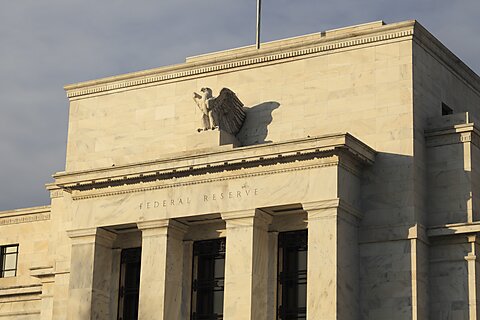Nicholas Anthony
In the Wall Street Journal, I had a letter to the editor published on December 11 regarding the Federal Reserve’s “Doomsday Book.” As Emre Kuvvet explained in the article I had responded to,
The so‐called Doomsday Book, an internal document used to guide the Federal Reserve’s actions during emergencies, has long been the subject of intrigue and suspicion. … The document reveals a fascinating history of diverging perspectives on the Federal Reserve’s emergency powers. Instead of adhering strictly to clear legislative boundaries to justify its actions during financial crises, the central bank appears to ground many of its decisions in the New York Fed’s belief in the Fed’s discretionary authority. It relies on precedent for many of its actions, without explicit congressional authorization in some instances.
However, the document is not just revealing of the Federal Reserve’s history. It also offers new insight into what the Federal Reserve may do next—especially as it applies to a central bank digital currency, or CBDC.
Officials have repeatedly avoided the question of whether the Federal Reserve has the authority to issue a CBDC, often repeating the line that the issue needs further investigation. Looking at Federal Reserve statements over recent years quickly reveals a consistent trend.
For example, in a 2019 letter, Federal Reserve chair Jerome Powell said there were “several significant legal questions” around the possibility of creating a CBDC. In a 2020 speech, former vice chair Lael Brainard said that the Federal Reserve was still working to “understand how the existing provisions of the Federal Reserve Act with regard to currency issuance apply to [issuing a] CBDC.” In a 2021 research paper published by the Federal Reserve, the authors wrote that considerations still need to be made “as to whether additional amendments to the [Federal Reserve Act] would be required related to the issuance of a general‐purpose CBDC.”
In a January 2022 report, the Federal Reserve updated its position to say, “The Federal Reserve does not intend to proceed with the issuance of a CBDC without clear support from the executive branch and from Congress, ideally in the form of a specific authorizing law.” (Emphasis added.)
Setting aside that “ideal intentions” are not binding constraints, this position still avoided the question of addressing what the Federal Reserve is and isn’t legally authorized to do.
In May 2022, former vice chair Brainard was asked during a congressional hearing to add context to the Federal Reserve’s report but only repeated the official statement. Finally, in September 2022, the Department of Justice was supposed to publish a report about the Federal Reserve’s legal authority to issue a CBDC, but it ultimately kept that analysis private. Even members of Congress were kept out of the loop.
It was only during a 2023 congressional hearing that chair Powell clarified the issue slightly saying that the Federal Reserve would need congressional authorization to issue a retail CBDC, but that it’s a different story when it comes to other forms of CBDCs. As I warned at the time, although some took relief at the news, there were still questions left open. In particular, the Federal Reserve’s 2022 report proposed an intermediated CBDC—a form that blends features of both retail and wholesale CBDCs. So, the Federal Reserve’s full authority is still an open question.
Whether the Federal Reserve will publicly address its full authority is still to be seen. However, Congress should not wait another four years to get those answers. Congress should formally establish that only it has the authority to decide whether a US CBDC is created. The Doomsday Book that Emre Kuvvet uncovered makes it clear that relying on discretionary authorities rather than waiting for congressional authorization is a tried and tested path for the Federal Reserve. Congress should act before the issuance of a CBDC becomes just another page in the Federal Reserve’s history.
For those interested in learning more, here are a few resources on CBDCs and the grey area around the Federal Reserve’s authority:
Central Bank Digital Currency: Assessing the Risks and Dispelling the Myths
House Hearing and FOIA Reveals Fed’s Stance on CBDC
The Fed’s Questionable CBDC Campaign



























